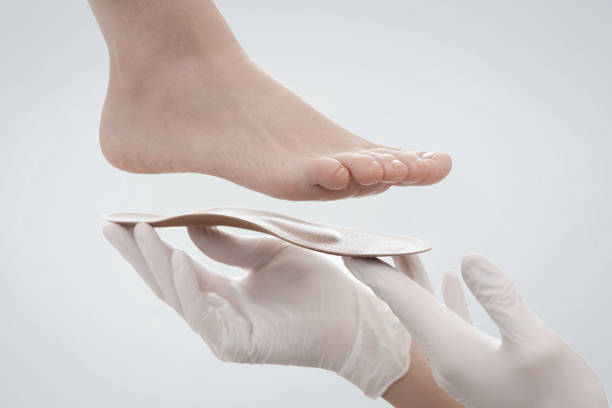Can Flat Feet Be Corrected In Adults: Everything You Should Know

Adults with flat feet have fallen arches or collapsed arches, meaning there is no discernible arch in the foot. Most adults with flat feet don’t experience any issues, but if the condition results in discomfort, muscle pain in the feet or legs, pain when walking, stiffness, or mobility problems, it may be time to visit a DFW podiatrist for an evaluation. To treat the condition and get you back on your feet, a skilled DFW podiatrist can suggest a number of treatments.
Table of Contents
What Are Flat Feet?
A person who has flat feet also referred to as flatfoot, has one or both feet with little to no arch. The bottom of your feet presses into the ground when you stand. A foot’s arch is typically hidden, though occasionally it can be seen when you lift the foot.
At birth, all infants have flat feet. Usually, by the age of six, arches begin to form. As adults, about two out of every ten children still have flat feet. Arches that collapse in some adults.
For most people, flat feet are not a problem. Treatments are available if flat feet are the cause of pain or other issues.
What Are the Types of Flat Feet?
Flexible
The most typical flat feet are flexible. Even when you aren’t standing, you can see the foot arches. When you put weight on your feet, the arches disappear. Growing up or in adolescence causes flexible flatfoot. Both of the feet are affected, and it gradually gets worse with age. The tendon and ligament in the foot arches have the potential to stretch, tear, and swell.
Rigid
When a person is sitting (no weight on the feet) or standing (no weight on the feet), their feet do not have arches. The severity of this condition worsens with age and frequently begins in the teen years. Possible discomfort in your feet. Flexing the feet upwards or downwards or side-to-side can be challenging. One or both feet may be impacted by flatfoot.
Adult-acquired (fallen Arch)
A fallen arch, or flat foot, is one that develops as an adult. The foot turns outward due to the collapsed arch, which can hurt. One foot only could be impacted by the issue. The leg tendon (posterior tibial tendon) that supports the arch is most frequently the source of inflammation or a tear.
Vertical Talus
Arches are prevented from forming in some infants due to a birth defect (congenital disability) known as vertical talus. The talus bone in the ankle is positioned improperly. The foot’s bottom resembles the bottom of a rocking chair. Also known as rocker-bottom foot, vertical talus.
Causes of Flat Feet in Adults
Adults’ flat feet do not get better with age like they do in children. In adults, flat feet may develop due to a number of reasons such as:
• Trauma or injury
• Arthritis
• Having weak arches
• Disease of the muscular or nervous system
• Having a condition such as tarsal coalition or diabetes
• Being overweight
Treatment for Flat Feet in Adults
Medication
Nonsteroidal anti-inflammatory drugs, for example, can be used to treat foot pain and inflammation. Symptom relief can also be achieved by using ice and rest.
Supportive Devices
Custom orthotics for your shoes or braces for your feet or legs can add stability and support.
Therapy and Exercise
The tendons and muscles in the feet can be stretched and strengthened with the help of physical therapy. To improve flexibility and mobility, certain exercises might be suggested.
Final Thought: Exercises and Orthotics
Flat feet are a birth defect that affects everyone. Arches typically begin to form by age 6. Over the course of adolescence or adulthood, flat feet (or collapsed arches) can occasionally develop. Walking may be painful for you. Consult your doctor if issues with flat feet arise. Stretching exercises and orthotics are two examples of nonsurgical treatments that can reduce pain and inflammation. Rarely, you might require surgery.
FAQ
How Can I Prevent Flat Feet?
Often, there is nothing you can do to avoid developing flat feet. Maintaining a healthy weight may make flat feet less painful.
Are Flat Feet Painful?
You won’t necessarily feel pain if you have flat feet. But as activity level and age rise, there is a greater likelihood that foot and leg pain will appear.
How Long Will It Take to Fix Flat Feet?
It can take three to eighteen months to correct the structural issues with flat feet. Although many cases of flat feet can be fixed, not all of them can.
